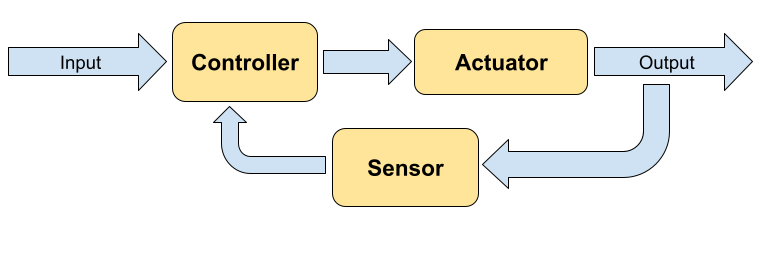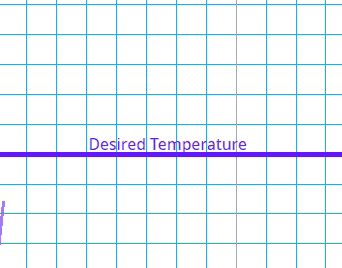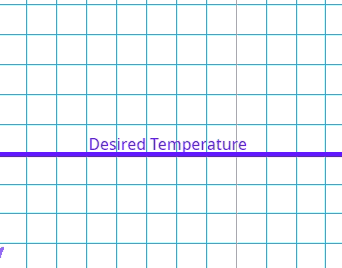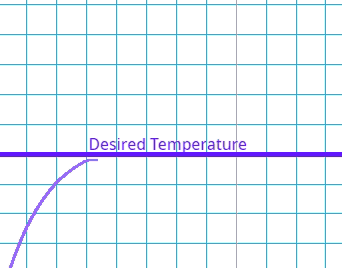Open Loop
Open Loop Control Systems

An open loop system is a control system where the output has no effect on the controlling action of the input system.
Example – Automatic Room Heating System
A simple example of an open look system is a central heating system based on a timer. It is generally colder at night so the central heating system is programmed to turn on at 6pm and turn off a 6am.
Advantages
This system has a number of advantages:
- It requires very few components and is quick to program so I will be cheaper than other systems to build.
- Due to its simplicity it will likely have few, if any bugs.
- It is very predictable as it does the same thing over and over.
Disadvantages
This simple system has a problem though, when the conditions of the environment are unpredictable then it doesn’t perform as well:
- If it is a very cold day outside then the system won’t adapt to the temperature change.
- If the central heating system turns on an heats up the room beyond the desired temperature then the system won’t turn off.
Threshold Controlled Closed Loop
Threshold Controlled Closed Loop Control System

A simple improvement to this system would be the use of a temperature sensor into the system that has a trigger event – such as the temperature exceeding/dropping below a certain value.
When the temperature drops below a threshold set value the system power is turn on to full power and the room is heated up. When the room reaches the desired temperature the heating system turns off. The output of the system is fed back as a input to the system, creating a feedback loop. This simple type of closed loop system is known as a threshold controlled closed loop system.
This improved system has a bit of a problem though – it tends to over compensate for the temperature changes as the system is either on full power or no power and only changes when the threshold set value is reached. Take a look at the model below as see for yourself.
Click here to have a play with the model
What is the result of changing the boiler temperature / ambient starting temperature?
Feedback Controlled Closed Loop
Feedback Controlled Closed Loop Control Systems

What we need is a system that takes into account not just the threshold value, but also the difference between the feedback value and the desired value. This means that the output itself is measure (the temperature of the room) is fed back into the system as another input, in the form of a measurement of the deviation from the desired state.
Example:
- Actual Temperature = 30 Degrees
- Desired Temperature = 20 Degrees
- Error Value = + 10 Degrees
The system is continually adjusting the strength of the output depending on the error value supplied to the controller. The actual temperature is compared to the desired temperature and this gradient is fed back into the system and this is used to provide negative feedback to the system so that the boiler temperature is influence by room temperature and vice versa.
This type of system is governed by branch of mathematics known as Control theory and is often implemented using a Proportional Integral Derivative (PID) controller.
Errors
Control System Errors
The aim of a control system is to minimize any errors in the system. There are 3 main types of errors that control systems are susceptible to: Overshoot, Delay & Steady-State Errors.
Overshoot Errors
This is where the system goes past the target value and has to readjust.

These errors are typical of threshold controlled closed loop systems.
Delay Errors
This is where there is a delay between the error being identified and the system compensating.

Steady State Errors
Once the system has reached equilibrium it may have a constant error where it never reconciles with the target value.

This is usually caused by the threshold value being set too low.